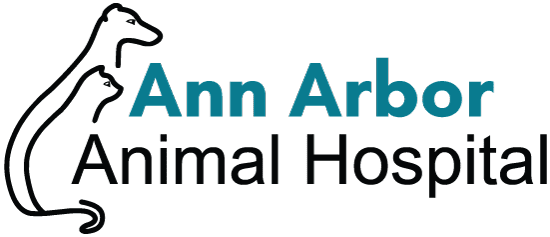The Ann Arbor Animal Hospital recently underwent the reaccreditation process by the American Animal Hospital Association (AAHA), and we are pleased to announce that we maintain our AAHA-accredited status.
 AAHA estimates that only 12-15% of small animal practices in the United States and Canada are accredited. Does that number surprise you? Unlike hospitals that treat humans, animal hospital accreditation is not mandatory. Many owners do not want to go through the lengthy and stringent process, which covers everything from cleanliness, safety and contagious disease protocols to surgery evaluation, client care, and continuing education for the staff.
AAHA estimates that only 12-15% of small animal practices in the United States and Canada are accredited. Does that number surprise you? Unlike hospitals that treat humans, animal hospital accreditation is not mandatory. Many owners do not want to go through the lengthy and stringent process, which covers everything from cleanliness, safety and contagious disease protocols to surgery evaluation, client care, and continuing education for the staff.
Even though evaluation by AAHA is voluntary, it is something that we undergo willingly because it makes us a better practice. “It sets a bar for quality assurances,” says Linda Griebe, owner of the Ann Arbor Animal Hospital. “We want to make sure we’re upholding the highest standards, to give our clients the best possible care and treatment.”
From the American Animal Hospital Association:
“AAHA has been recognizing veterinary hospitals for their commitment to maintaining high standards of care for over 80 years. To be eligible for AAHA accreditation, hospitals must be evaluated on approximately 900 standards that assess safety protocols, equipment, veterinary knowledge, and other key areas of pet health care. Accredited hospitals are home to leading pet health care providers.
Accreditation by AAHA means that an animal hospital has been evaluated on approximately 900 standards of veterinary excellence. To maintain their accreditation, hospitals undergo a rigorous review by veterinary experts every three years. State and provincial regulations can vary widely – in fact, some states don’t routinely inspect hospitals, only going in for an inspection when a complaint is filed by a pet owner. AAHA accreditation is considered the standard for veterinary excellence, and does not vary between states or provinces (AAHA accredits hospitals in both the U.S. and Canada).”
Recent Posts
About Us
Ann Arbor Animal Hospital is a locally-owned animal hospital operating for over 90 years in Ann Arbor, MI.
